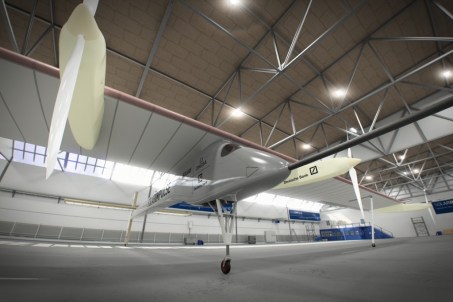 Commercial and private aircraft are marvels of modern engineering, but typically they are fuel-guzzling beasts. As the world moves toward a future of alternative energy and alternative fuels, many are hoping to give the airplane a green makeover. Some are focusing on biofuel-powered aircraft. Others are focusing on using alternative energy, chiefly solar power to power passenger aircraft.
Commercial and private aircraft are marvels of modern engineering, but typically they are fuel-guzzling beasts. As the world moves toward a future of alternative energy and alternative fuels, many are hoping to give the airplane a green makeover. Some are focusing on biofuel-powered aircraft. Others are focusing on using alternative energy, chiefly solar power to power passenger aircraft.
Solar power has already been used to power unmanned aircraft, but the challenge of hauling a heavy human up into the atmosphere remains more daunting.
Enter Bertrand Piccard. Mr. Piccard, a distinguished Swiss adventurer will captain a new solar one-person aircraft designed by alternative energy engineering firm Solar Impulse. The aircraft’s wingspan is as wide as a jumbo jet (to provide maximum solar panel space), but thanks to space-age carbon-fiber materials only weighs as much as a mid-sized car — about 1,500 kg (the same as a Toyota Camry).
Describes Solar Impulse chief executive Andre Borschberg in an interview with BBC News, “This is truly a new design – an airplane the size of an Airbus and the weight of a mid-sized car – so we’re not taking risks by not understanding something.”
On Thursday and Friday the prototype aircraft saw its first action outside the hangar, taxing around the runway, first with a protective trolley and later without. The testing went smoothly with a Solar Impulse spokesperson stating, “It was just fantastic today. We are very excited about it.”

In February, assuming the test flight goes well, Captain Piccard will attempt to boldly go where no man has gone before, piloting the new design in a full flight. The flight is intended to be followed by an attempted Trans-Atlantic flight in 2012. Describes Mr. Borschberg, “If this is satisfactory, we will dismantle it and transport it [to Payerne air force base in western Switzerland] where we will do the real first flight of about two hours, in February.”
There have been a handful of past solar aircraft, but most have relied on first storing energy in batteries, then flying (one example is the Sunseeker from the 1990s). The HB-SIA, as the new aircraft is called gets enough charge directly from the panels to take off during the day. It does utilize charge stored in batteries to power night time flight. It flies at a relatively slow speed of 28 mph to maximize energy efficiency. The design is intended to be able to fly for multiple days without stopping.
Editors' Recommendations
- Scientists think the next big solar storm could create an ‘internet apocalypse’
- This tech was science fiction 20 years ago. Now it’s reality
- Harnessing darkness: The race to solve solar power’s greatest problem
- 10 infamous tech flops that were way ahead of their time
- Pro-level athlete tech is filtering down to your high school’s football team


